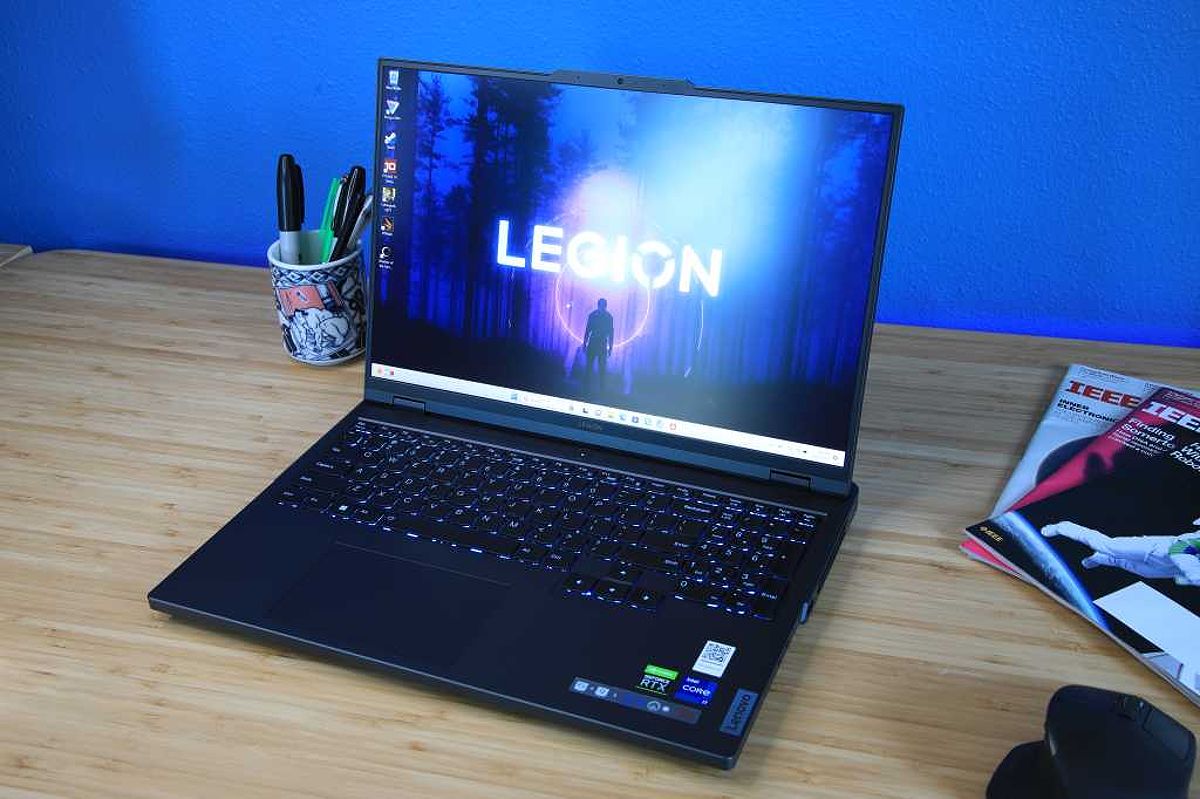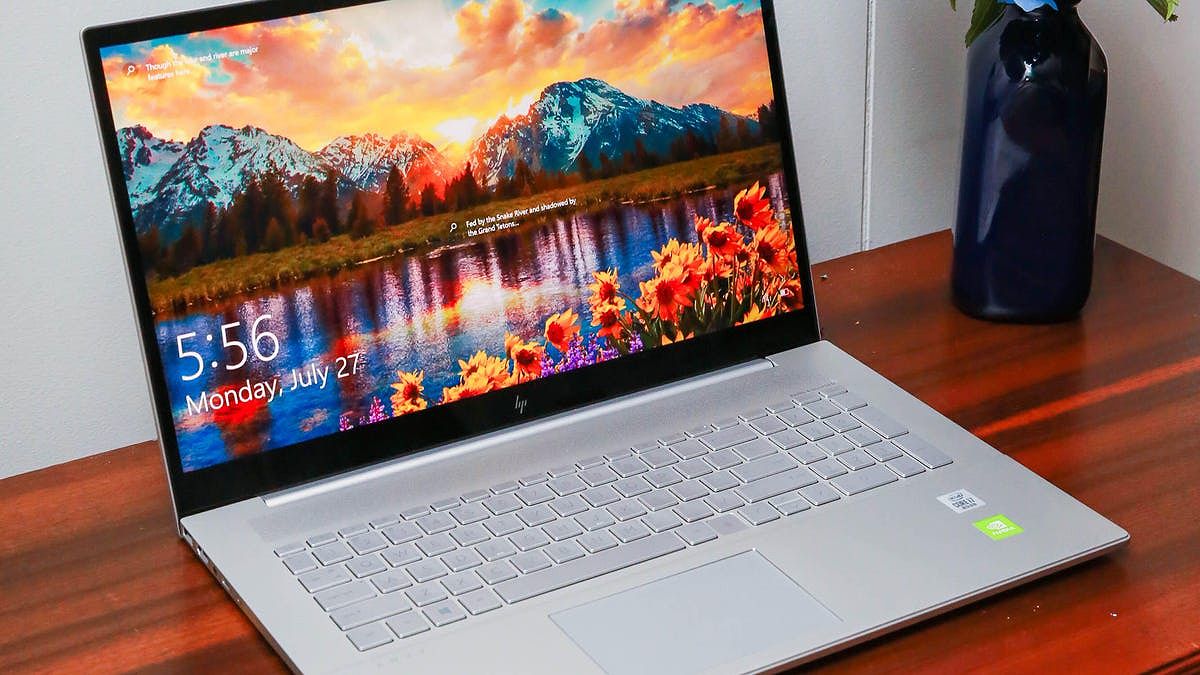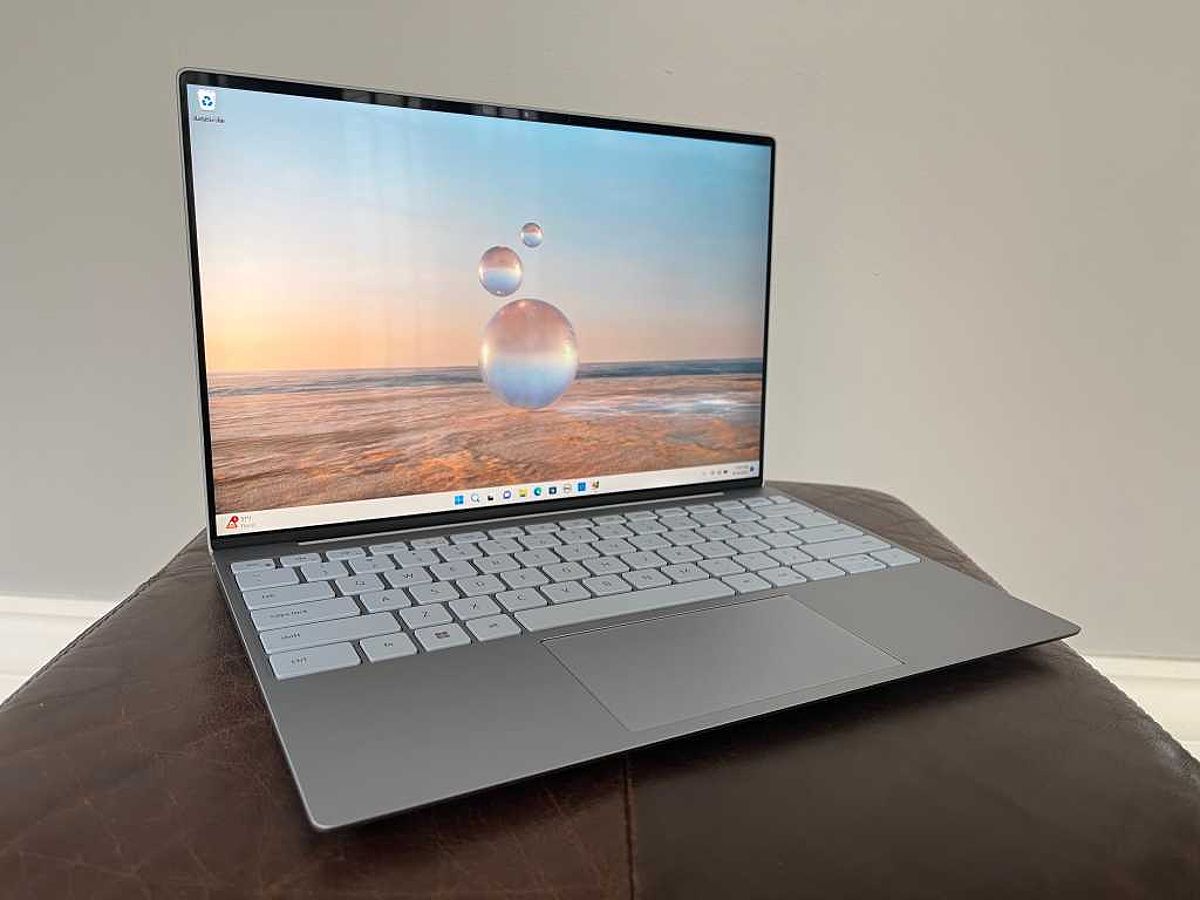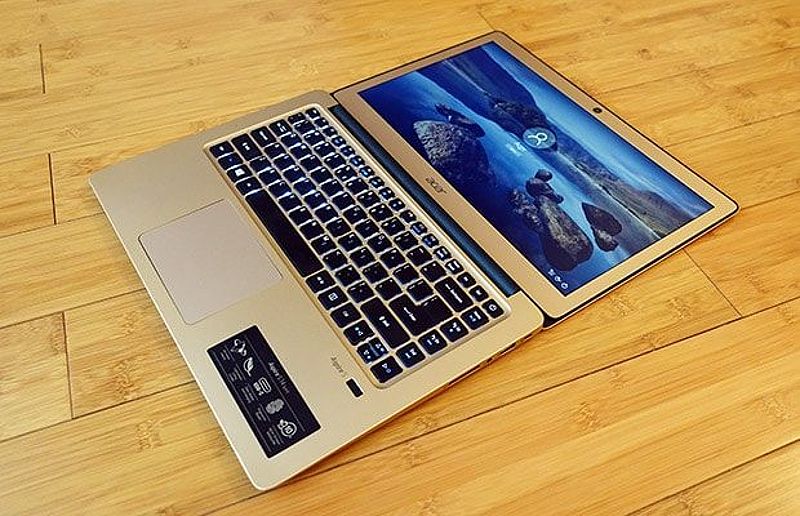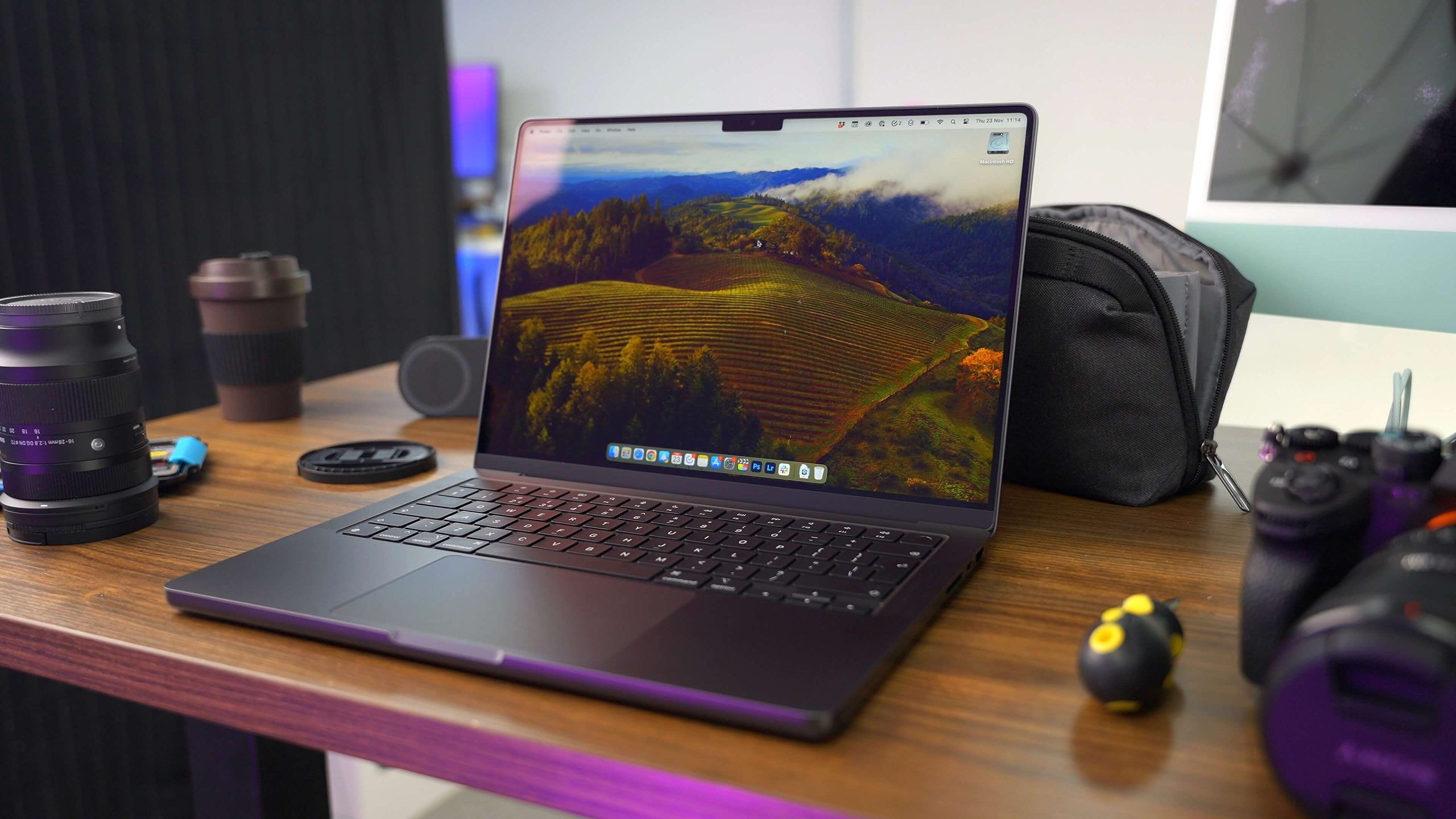Intel Arc Vs. Iris Xe: The Battle For Laptop Graphics Dominance
The laptop market is abuzz with the arrival of Intel’s Arc discrete GPUs, challenging the long-standing dominance of NVIDIA and AMD. As gamers and content creators eagerly await the performance benefits of these new graphics solutions, the question arises: How do Intel’s Arc and Iris Xe graphics compare, and which one should you choose for your laptop?
Intel Arc: Reshaping the Laptop Graphics Landscape
Intel’s foray into the dedicated GPU market with the Arc series is a significant development, as the company aims to provide a viable alternative to the established players. The specific Arc GPU we’ll be examining is the entry-level Arc A370M, which promises to deliver a substantial performance boost over Intel’s integrated Iris Xe graphics.
Xe-HPG: Intel’s Advanced Graphics Architecture
At the heart of the Arc A370M lies Intel’s Xe-HPG (High-Performance Graphics) architecture, a significant leap forward from the company’s previous graphics solutions. Designed for high-performance gaming and content creation, Xe-HPG brings several key features to the table.
Ray Tracing and AI Capabilities
One of the standout features of the Arc A370M is its support for hardware-accelerated ray tracing. This technology enables more realistic lighting and shadows in games, providing a deeper level of visual immersion. Additionally, the GPU’s AI-driven features, such as Intel’s Xe Super Sampling (XESS), help to enhance frame rates without compromising visual fidelity.
Dedicated Video Memory
Unlike the integrated Iris Xe graphics, the Arc A370M comes equipped with its own dedicated GDDR6 video memory. This dedicated memory allows the GPU to handle more demanding workloads, such as high-resolution gaming and complex content creation tasks, without straining the system’s main memory.
Content Creation Acceleration
The Arc A370M excels not only in gaming but also in content creation workflows. Its hardware-accelerated video encoding and advanced rendering capabilities can significantly reduce rendering times in applications like Adobe Premiere Pro and DaVinci Resolve, making it an appealing option for creators.
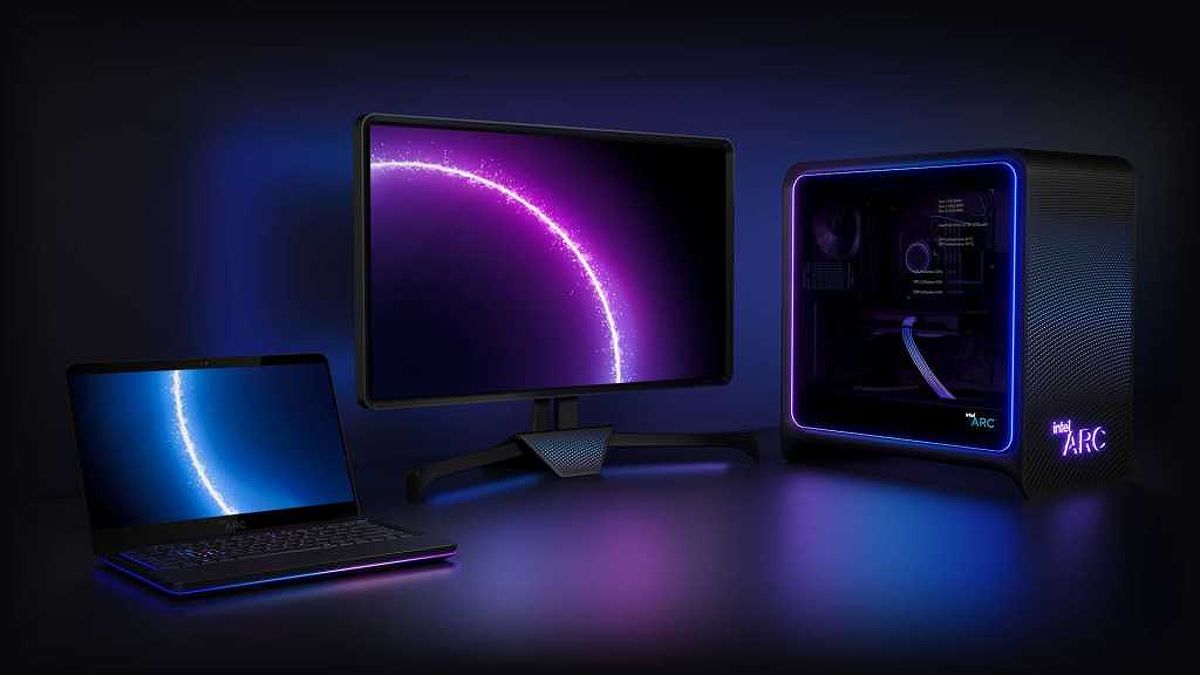
Intel Iris Xe: The Efficient Integrated Solution
In contrast, Intel’s Iris Xe graphics are an integrated solution, meaning they share system memory with the CPU rather than having their own dedicated video memory. While not as powerful as dedicated GPUs, Iris Xe offers a more balanced approach, providing decent performance for everyday tasks and casual gaming.
Integrated Design and Everyday Versatility
Iris Xe graphics are built directly into Intel’s 11th and 12th generation CPUs, making them a cost-effective and power-efficient option for laptop manufacturers and users. Iris Xe is well-suited for basic productivity, web browsing, and light gaming, catering to the needs of everyday users.
Iris Xe’s Strengths
One of the key advantages of Iris Xe is its affordability. Laptops equipped with Iris Xe tend to be more budget-friendly, making them accessible to a wider audience. Additionally, the integrated nature of Iris Xe graphics allows for lower power consumption and improved battery life, which is crucial for mobile users.
Performance Showdown: Intel Arc vs- Iris Xe
Gaming Performance: Arc’s Dominance
When it comes to gaming, the Arc A370M clearly outclasses the Iris Xe integrated graphics. In our testing, the Arc A370M delivered impressive frame rates in popular titles like Final Fantasy XIV: Endwalker, Shadow of the Tomb Raider, and Metro Exodus Enhanced Edition.
Benchmark Highlights:
- Final Fantasy XIV: Endwalker: The Arc A370M achieved an average of 70 FPS at high settings, while the Iris Xe struggled to reach 30 FPS.
- Shadow of the Tomb Raider: At 1080p with the highest settings, the Arc A370M maintained around 60 FPS, whereas Iris Xe could barely maintain 20 FPS.
- Metro Exodus Enhanced Edition: With ray tracing enabled, the Arc A370M delivered an average of 33 FPS, while the Iris Xe could not meet the game’s minimum requirements.
The Arc A370M’s ray tracing capabilities proved to be a significant advantage, allowing it to handle the latest graphical effects in games like Metro Exodus Enhanced Edition with relative ease.
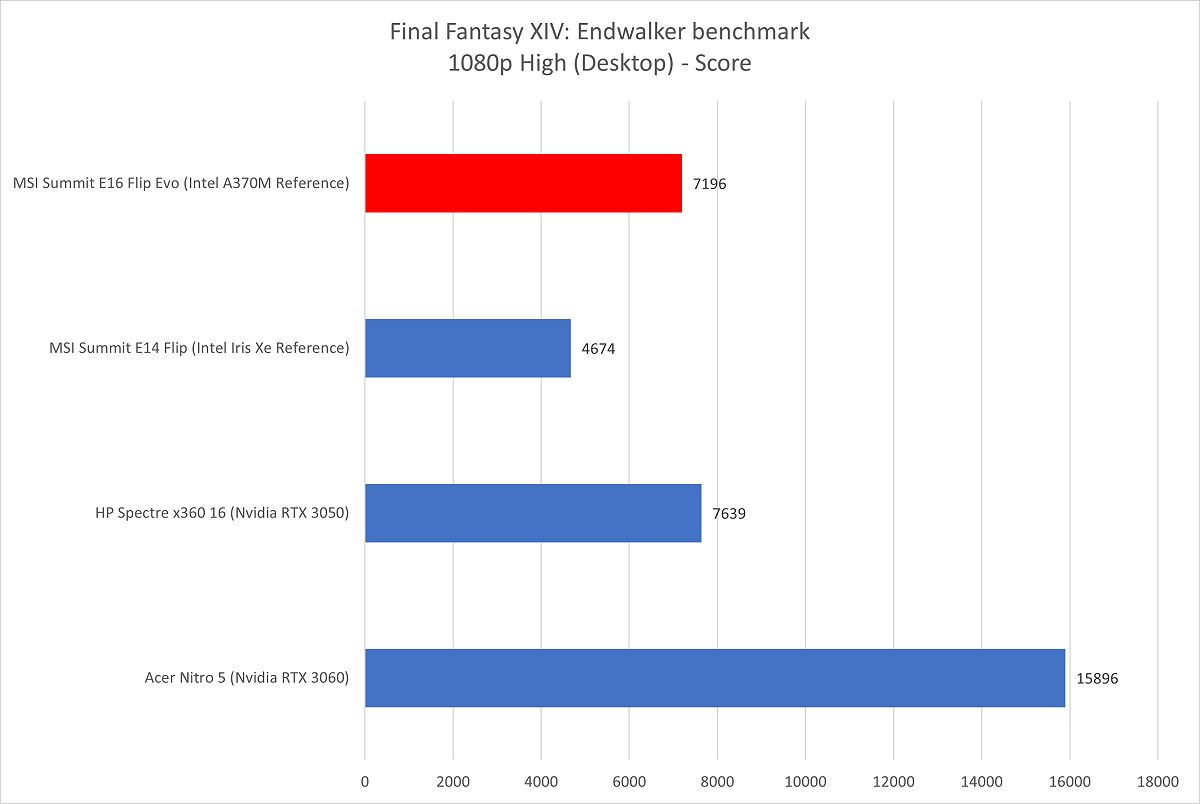
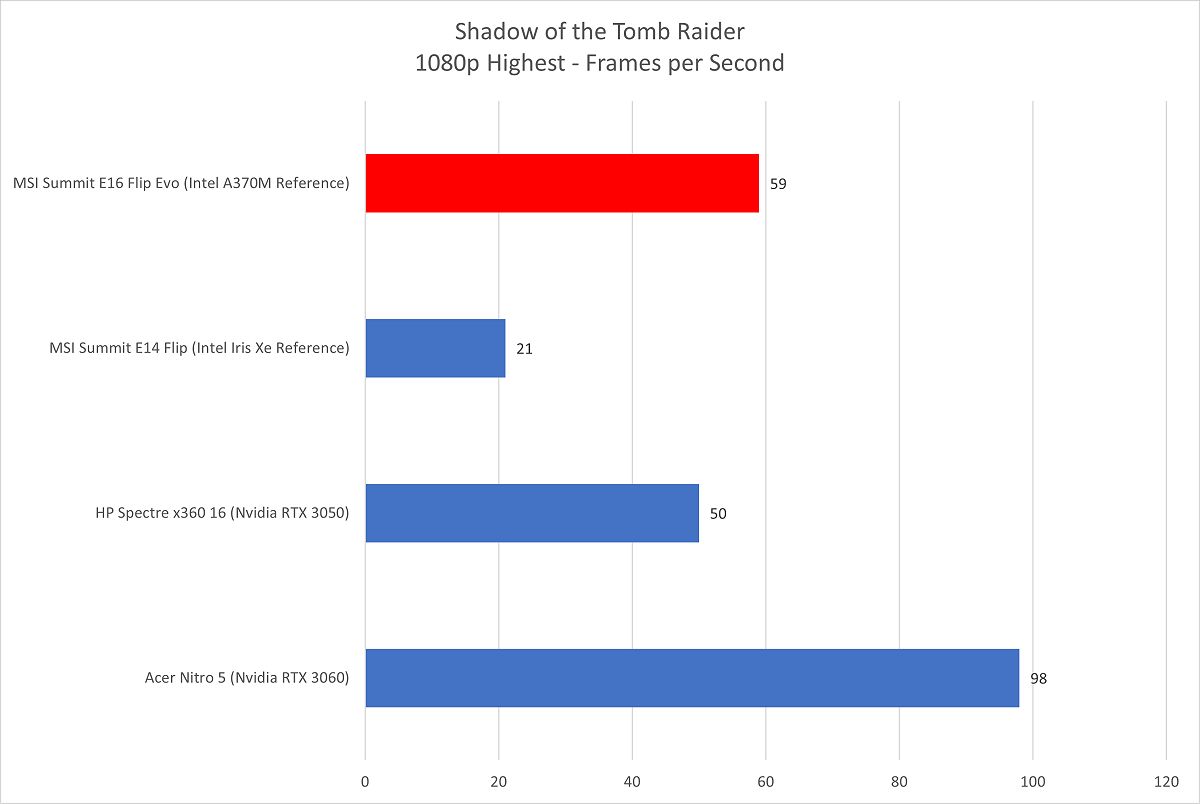
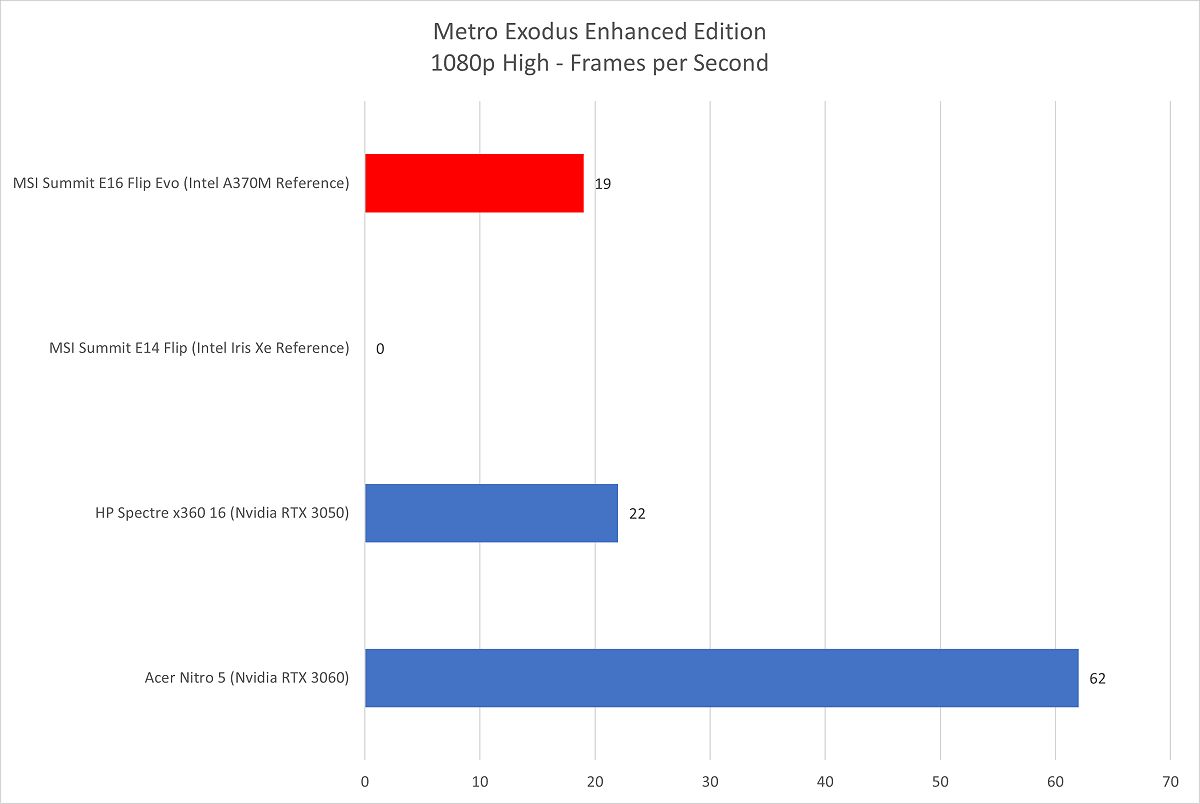
Content Creation: Arc Shines with Deep Link
Beyond gaming, the Arc A370M also excels in content creation workflows, thanks to Intel’s Deep Link technology. This feature allows the Arc GPU to collaborate with the integrated Iris Xe graphics, leveraging both sets of resources to accelerate tasks like video encoding, image upscaling, and special effects processing.
In our testing, the Arc A370M paired with Iris Xe delivered impressive results in applications like Topaz Video Enhance AI, outperforming both a laptop with NVIDIA’s RTX 3050 GPU and AMD’s Ryzen 7 6800U with Radeon 680M integrated graphics. The Arc A370M’s hardware-accelerated video encoding also proved to be a match for the Apple M1-powered MacBook Pro 13, showcasing the strides Intel has made in content creation performance.

Power Consumption and Efficiency
Another critical factor to consider is power consumption. Integrated graphics like Iris Xe are designed to be power-efficient, making them ideal for users who prioritize battery life. In contrast, dedicated GPUs like the Arc A370M tend to consume more power, which can lead to shorter battery life in laptops.
However, the performance gains from the Arc A370M can often justify the increased power consumption for gamers and content creators who require higher graphical capabilities. Intel’s Deep Link technology also helps optimize power usage by balancing workloads between the integrated and dedicated graphics solutions.
Choosing the Right Intel Graphics Solution
When deciding between Iris Xe and Intel Arc, the choice ultimately comes down to your specific needs and priorities.
Iris Xe: The Affordable and Efficient Choice
Iris Xe is the clear choice for budget-conscious laptop buyers who prioritize affordability and don’t require high-end graphics performance. If your laptop usage is primarily focused on basic tasks, web browsing, and light productivity, the power-efficient Iris Xe will more than suffice.
Intel Arc: The Performance-Oriented Option
On the other hand, if you’re a gamer or content creator who demands a more capable graphics solution, the Intel Arc A370M is the better option. This dedicated GPU can provide a noticeable boost in gaming frame rates and a significant improvement in content creation workflows, especially when leveraging Intel’s Deep Link technology.
Availability and Pricing: Considerations for Laptop Buyers
Availability of Arc-Equipped Laptops
It’s worth noting that the availability of Arc-equipped laptops is still relatively limited compared to their Iris Xe-powered counterparts. However, as Intel continues to ramp up production and work with OEMs, we can expect to see more Arc-equipped options hit the market in the coming months.
Pricing Considerations
Regarding pricing, Arc-equipped laptops do tend to carry a premium over their Iris Xe-based counterparts. This is a trade-off that users will need to weigh against the performance benefits of the dedicated GPU. Ultimately, the decision comes down to your specific needs and budget.
Future-Proofing Your Investment
When considering Intel Arc vs. Iris Xe, it’s essential to think about future-proofing your investment. As games and applications become more demanding, having a dedicated GPU like the Arc A370M can help ensure that your laptop remains capable of handling new titles and software updates for years to come.
On the other hand, if your computing needs are modest, and you don’t anticipate needing high-end graphics performance, then opting for an Iris Xe-equipped laptop may be the more sensible choice. It all comes down to evaluating your current and anticipated future needs.
Intel’s Graphics Roadmap: Continued Innovation
As Intel’s Arc graphics lineup continues to evolve, the company is poised to make a significant impact on the laptop graphics market. The company has already demonstrated its commitment to delivering competitive performance with the Arc A370M, and we can expect to see further advancements in future generations of Arc GPUs.
Intel’s roadmap for Arc graphics suggests that the company is working to expand the lineup, offering a wider range of performance options to cater to different user needs. Additionally, the company is likely to focus on improving driver optimization, enhancing features like ray tracing and AI-powered upscaling, and addressing any performance or compatibility issues that may arise.
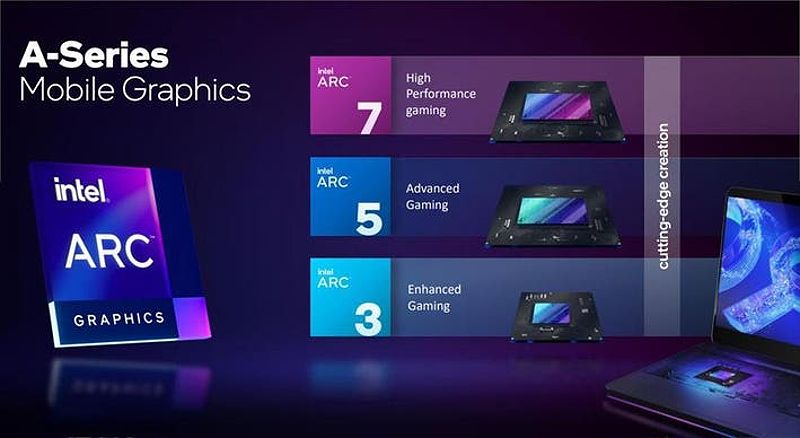
FQAs
Q: What is the main difference between Intel Arc and Iris Xe graphics? A: Intel Arc is a dedicated GPU, while Iris Xe is an integrated graphics solution. Arc offers significantly better performance for gaming and content creation tasks, but it also comes at a higher price point. Iris Xe is more affordable and power-efficient, but it’s not as powerful.
Q: Are Intel Arc laptops worth the extra cost? A: If you’re a gamer or content creator who needs the extra performance, then Intel Arc laptops can be worth the higher price tag. However, if you’re on a tighter budget and don’t require high-end graphics, Iris Xe laptops may be the better choice.
Q: What are the latest Intel Arc laptops available? A: As of August 2024, you can find Intel Arc-equipped laptops from various manufacturers, including Dell, HP, Lenovo, and Acer. The specific models and availability may vary depending on your region.
Q: How do Intel Arc graphics compare to NVIDIA and AMD GPUs? A: Intel Arc is a relatively new entrant in the dedicated GPU market, so its performance is still being evaluated. Early benchmarks suggest that the Arc A370M can offer competitive performance in the entry-level segment, particularly in content creation workloads. However, it’s unlikely to match the top-tier offerings from NVIDIA and AMD, at least in the current generation.
Q: What is the future outlook for Intel Arc graphics? A: Intel has ambitious plans for its Arc graphics lineup, with the company set to expand the series and continue to improve performance, features, and optimization. As Intel refines its drivers and works closely with OEMs, we can expect to see even more compelling Arc-equipped laptops hit the market in the coming years, potentially challenging the dominance of NVIDIA and AMD in the dedicated GPU space.
Conclusion: Embracing the Future of Laptop Graphics
As Intel’s Arc graphics lineup continues to evolve, it’s clear that the company is poised to shake up the laptop graphics market. With the Arc A370M delivering impressive performance in both gaming and content creation workloads, Intel is laying the groundwork for a true third option in the dedicated GPU space.
While the Arc A370M may not match the top-tier offerings from NVIDIA and AMD, its strong showing in our tests suggests that Intel is well on its way to becoming a viable competitor. As the company refines its drivers, optimizes its software, and expands the Arc lineup, we can expect to see even more compelling options emerge in the future.
For now, laptop buyers have an intriguing choice to make: opt for the power-efficient and affordable Iris Xe, or invest in the more capable Arc A370M for a noticeable boost in gaming and content creation performance. Whichever option you choose, Intel’s Arc graphics have certainly made the decision a more interesting one.
MORE FROM snapflicks.net

